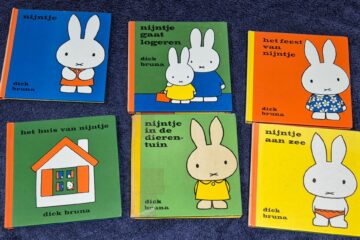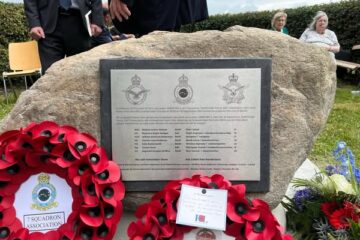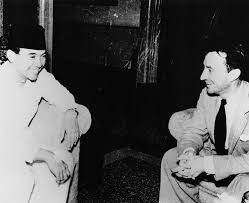This is the only official Dutch War Cemetery in Australia. It is only one of three non Commonwealth War Cemeteries in Australia, the other two being the Tatura (German) War Cemetery in Victoria (250 graves) and the Cowra (Japanese) War Cemetery in New South Wales (523). At Cowra the Dutch interned people from Netherlands East Indies, 13 died here and are honoured by the Indonesian Government.
The Dutch War Cemetery in Perth is a walled area surrounded by garden and is a peaceful memorial to a time of violence during World War 11. The Dutch War Cemetery is tangible evidence of some of the casualties of the first two Japanese air raids on Broome in March 1942. It is one of three non-Commonwealth war cemeteries within Australia.
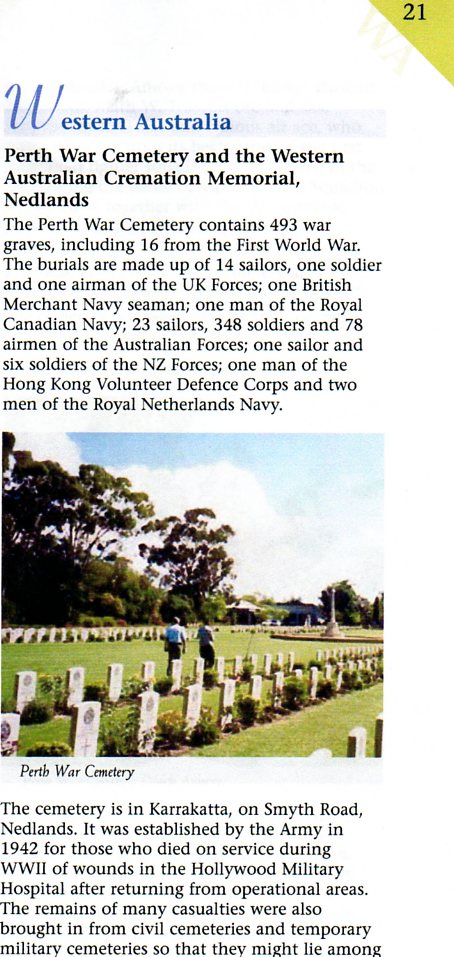


Physical Description
There are 26 graves in a lawn setting, surrounded by brick walls. A plaque on the western wall was erected in memory of the people who died in 1942.
History
According to The Commonwealth War Graves Commission (1962, p.25), this is known as the Perth War Cemetery Netherlands Annexe, although it bears two inscriptions at its entry, one giving its name as ‘Dutch War Cemetery’, the other as ‘Nederlandse Oorlogsgraven’. It is generally stated (Prime 1992, p.26; The Commonwealth War Graves Commission 1962, p.25; Tyler 1987, p.60) that there are 24-25 burials in this Cemetery, comprising 4 Dutch serviceman and 20-21 Dutch civilians, all of whom were killed at Broome or at Carnot Bay during the Japanese air raid of 3 March 1942 (see also Richards 1996, p.278).
Research carried out for these Historical Notes shows that there are some errors of fact. Not all the deaths happened on 3 March, some succumbed to wounds over at least the next three days. Furthermore, there are actually 26 burials in this Cemetery, of which 5 civilian graves are recorded as ‘unknown’. The ‘additional’ burial is that of Lieutenant D A Hendriksz, Royal Netherlands Army Air Force (whose military rank is commemorated on his grave plaque). His remains were not repatriated to Indonesia as stated by Tyler ( 1987, p.60) who incidentally says the opposite on p.118.
Not connected with the air raid of 3 March is the grave of Abdul Hamed bin Juden, variously described as ‘a Malay worker’ (Prime 1992, p.27) or as ‘Indonesian Dutch’ (Tyler 1987, p.60), who was killed at Broome airfield during the later Japanese air raid of20 March 1942 (Prime 1992, p.27: Tyler 1987, p.lO).
All these remains were originally buried in the Pioneer Cemetery at Broome where there is now a commemorative plaque. The four who died at Carnot Bay over 3 – 6 March were initially buried on the beach but were exhumed in mid-April 1942 by an Army team and interred near the other Dutch at Broome.
All Dutch remains at Broome were exhumed in January 1950, with most being reinterred at Karrakatta in February (Prime 1992, p.26; Tyler, 1987, Appendix D). Each grave is marked by a bronze plaque set on a small stone. All plaques show the date of death as 3 March 1942, which is not correct for at least four of the persons. This Cemetery, which was created by the Australian Government, is maintained by Office of Australian War Graves staff. graves).
The source of the list of names is: Allies in adversity, Australia and the Dutch in the Pacific War: The Japanese raid on Broome
| Name | Age | Occupation |
|---|---|---|
| Sergeant Albert van Tour | 35 | RNN |
| Catharina van Tour | 8 | Civilian |
| Sergeant Johannes Gerardus van Aggelan | 32 | RNN |
| Johanna van Aggelan | 32 | Civilian |
| Luitenant ter zee Pieter Johannes Hendrikse | 51 | RNN |
| Loes Heidsieck | 25 | Civilian |
| Henri Rudolf de Sera | 21 | RNN |
| Hendrik de Bruyn | 4 | Civilian |
| Alida Brandenburg-Trumpie | 30 | Civilian |
| Jenny Hendrikse van der Putte | 28 | Civilian |
| Johannes van Tuyn | 1 | Civilian |
| Maria van Tuyn van Gelooven | 28 | Civilian |
| Elizabeth Kuin | 5 | Civilian |
| Anna Maria Dorothea Kuin Sturk | 29 | Civilian |
| Cornelius Piers | 14 | Civilian |
| Frans Piers | 7 | Civilian |
| C.G.E. Piers Morien | 42 | Civilian |
| Johanna Borsch Baas | 36 | Civilian |
| Adri Kramer | 17 | Civilian |
| Abdul Hamed bin Juden | 36 | Civilian (killed in raid March 20 1942 ) |
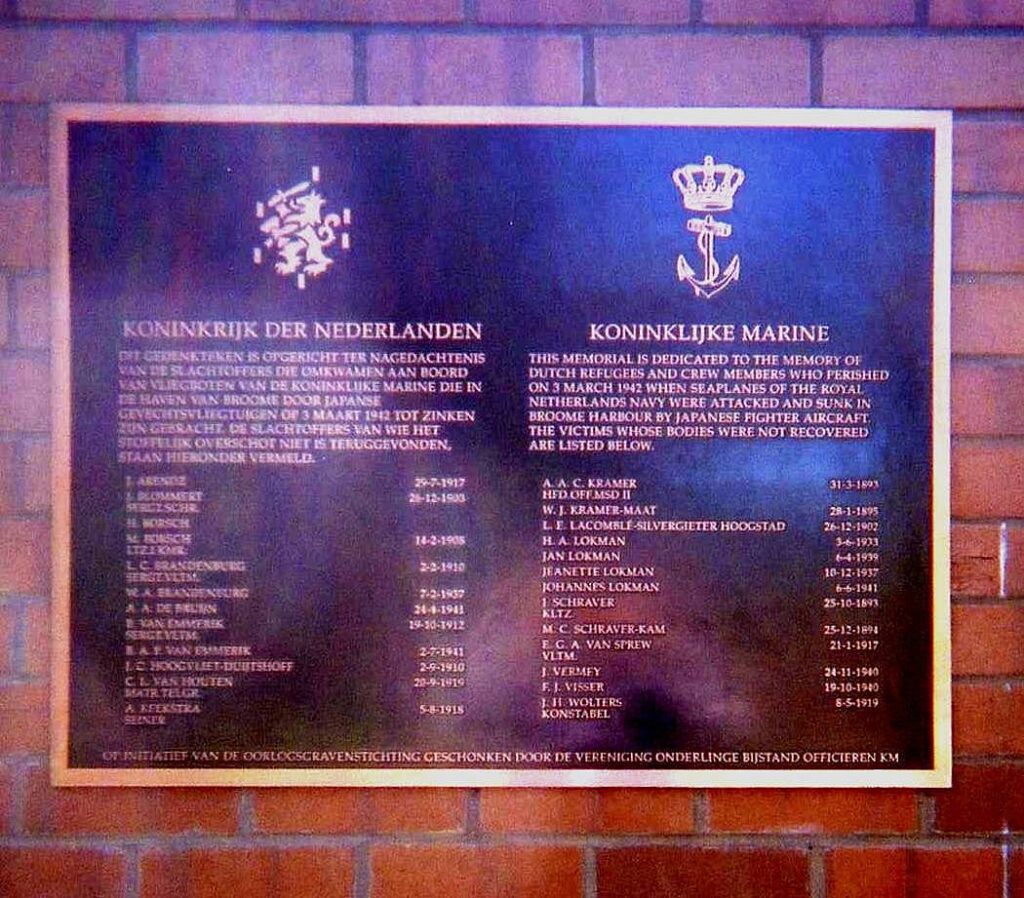
Another three graves are marked “Unknown Dutch lady”, and two are marked “Unknown Dutch child”. Not all persons motioned above are buried at the Defence section of the Perth cemetery.
Nonja Peters was invited by the Shire of Broome to present at the commemoration of the 80 years anniversary of the air raid on Broome. The talk was commissioned by the Broome Museum for their ‘Reflections Night’ . It was funded by the Shire of Broome. The Dutch Ambassador attended these functions.
The following is a quote from Nonja: “I like to read the ppt (below) with empathy and compassion. It’s not a list it’s a tragedy.”
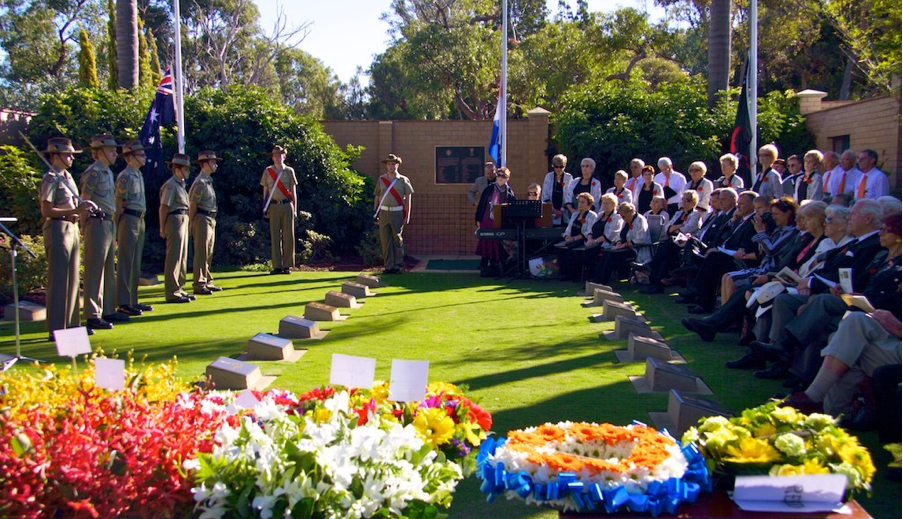
Source: Heritage Council of Western Australia
See also: The Drama of Broome 3-3-1942
